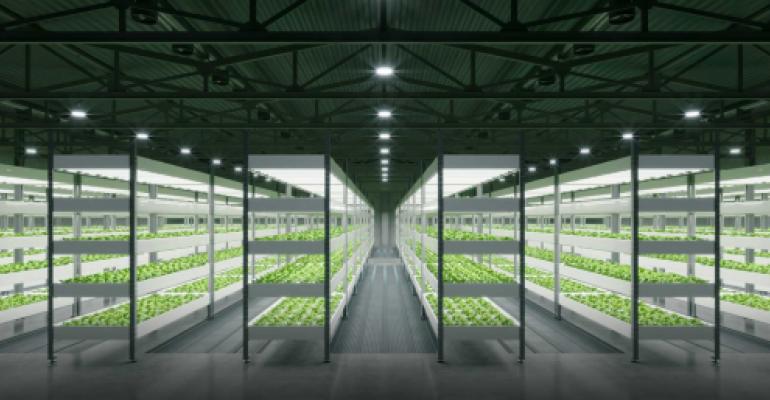Sponsored by Phoenix Investors
As the industrial real estate sector strives to meet demand for an additional 1.5 billion square feet of space over the next five years, both new and existing industrial space will need to accommodate a growing desire for sustainable features. The ongoing impact of climate change has already begun to cause regular supply chain disruptions in the form of increased natural disasters such as extreme weather events and wildfires, inspiring many industrial operators to incorporate sustainability initiatives into their risk management strategies.
Commercial, residential, and industrial buildings account for about 40 percent of all energy consumption and greenhouse gas (GHG) emissions in the United States. As lessees and operators of distribution centers, manufacturing facilities, and other industrial buildings strive to lessen their negative impact on the environment, pressure will increase on the commercial real estate sector to do their part. This article will discuss sustainable features that builders and building owners can implement into industrial properties.
See Things in a New Light
Fluorescent and incandescent lighting solutions draw a lot of energy and then release about 90 percent of that energy as heat waste. LED lighting is an increasingly popular alternative for reducing energy costs and waste in industrial operations because it only releases about 5 percent of its energy as heat. Some estimates show that installing LED lighting in an industrial building can cut lighting energy costs by up to 75 percent. Building owners may choose to further optimize internal lighting through the use of sensors and control systems.
LED lighting is also better for the environment than the traditional fluorescent lighting solutions used in warehouses and manufacturing plants. Fluorescent bulbs contain small amounts of mercury that can leech into soil in landfills if not properly recycled through a hazardous waste program.
Is Your Roof Cool Enough?
Traditional roofing systems often incorporate gravel, rubber, tar or other darkly colored materials that absorb heat into the building envelope and drive up cooling costs. Most standard roofing systems contribute to what is known as heat islands, where clusters of buildings raise the temperature of a small area by several degrees. The heat island effect can have negative impacts on local water quality, human health, and the formation of ground-level ozone.
A cool roof uses a white, reflective coating over the EPDM rubber layer to reflect sunlight safely away from the building. This reduces a building’s contributions to heat island zones and may reduce cooling costs by up to 20 percent.
Lock It Up Tight
Large industrial structures have many entrances, loading dock doors, and weak points in the building envelope where air can escape. Continuously losing climate-controlled air can have a massive impact on energy costs for the building, which in turn increases its carbon footprint. Here are some tips to seal up your industrial facility:
- Air curtains. Installing air curtains over entrances and loading dock doors can help to minimize the exchange of indoor and outdoor air.
- Insulation. A thoroughly insulated building will retain climate-controlled air and help to lower HVAC costs. Spending more on higher quality insulation up front will offer a higher return on investment over time in terms of energy savings.
- Fans. Installing fans to recirculate indoor air can help to distribute cooled or heated air more evenly and help to lower energy costs.
The strategies listed here are only a few ways that designers and property owners can improve sustainability within their facilities. For more comprehensive action, pursuing LEED certification for factories and warehouses will act as a guide for the implementation of even more sustainable building elements.
About Phoenix Investors
Founded by Frank Crivello in 1994, Milwaukee-based Phoenix Investors and its affiliates (collectively “Phoenix”) are a leader in the acquisition, development, renovation, and repositioning of industrial facilities throughout the United States. Utilizing a disciplined investment approach and successful partnerships with institutional capital sources, corporations and public stakeholders, Phoenix has developed a proven track record of generating superior risk adjusted returns, while providing cost-efficient lease rates for its growing portfolio of national tenants. Its efforts inspire and drive the transformation and reinvigoration of the economic engines in the communities it serves. Phoenix continues to be defined by thoughtful relationships, sophisticated investment tools, cost efficient solutions, and a reputation for success.





